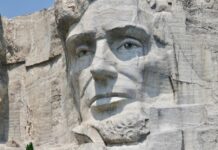My previous column objected to President Donald Trump and Sen. Chuck Schumer’s, D-N.Y., proposed $2 trillion “infrastructure” spending. As with President Barack Obama’s “stimulus,” the Trump-Schumer plan violates the concept of federalism and bails out states that spend irresponsibly, guaranteeing a future of continued irresponsible behavior by state and local governments.
But several of my column’s readers insisted that Trump — a builder and shrewd negotiator — plans to spend more efficiently and effectively than Obama did under his $787 billion so-called stimulus plan. Respected lawyer and columnist John Hinderaker, for example, wrote: “I disagree: Obama’s faux stimulus consisted largely of support for state governments so they could keep union employees on the payroll. Very little of the ‘stimulus’ involved construction projects. Trump, at least, is actually talking about building, repairing and maintaining infrastructure.”
The at-least-Trump-will-spend-it-better argument ignores federalism — the federal principle of government holding that states are responsible for state projects — and increases the incentive for states to engage in financial irresponsibility, knowing they can depend on the federal government.
Also, unlike Obama’s stimulus, Trump proposes public-private projects. California’s mostly mothballed “bullet train” project, having spent $5.4 billion since 2008, serves as a recent example of a lot of “public” but no “private.” After delays, cost overruns and the lack of the anticipated private money, the state’s new Democratic governor is now sharply curtailing its goals.
Article I, Section 8 of the U.S. Constitution outlines the federal government’s limited and specific duties, powers and obligations. Not found is the power, responsibility or expectation to build, renovate, expand or manage state and local projects. At one time, Presidents actually adhered to this constitutional principle of federal restraint.
President James Monroe, our 5th President, cast his only veto when Congress passed a bill authorizing money to expand the Cumberland Road. Even though the expansion stood to benefit Virginia, Monroe’s home state, he said the project violated the principle of federalism, under which the federal government lacks the authority to spend money on state projects.
According to Monroe’s biography on the University of Virginia’s americanpresident.org: “Although Monroe personally supported the idea of internal improvements, he balked at the federal government’s role in the American System being proposed by Congressmen Henry Clay and John C. Calhoun.
They wanted a series of federally financed projects designed to improve and update the nation’s roads, bridges and canals. Monroe worried, however, that federal payments for such internal improvements would expand even further the power of the federal government at the sake of state power. Where would the limits be drawn?”
Columnist and economist Walter Williams notes that several other presidents agreed:
President James Madison, our 4th President, who is regarded as the father of the Constitution, blasted Congress in 1792 for appropriating money for French refugees. Madison wrote, “I cannot undertake to lay my finger on that article of the Constitution which granted a right to Congress of expending, on objects of benevolence, the money of their constituents.”
President Franklin Pierce, our 14th President, vetoed a bill in 1854 that aided the mentally ill, arguing, “I cannot find any authority in the Constitution for public charity.” He added that to approve such spending “would be contrary to the letter and the spirit of the Constitution and subversive to the whole theory upon which the Union of these States is founded.”
President Grover Cleveland was our 22nd and 24th President. In 1887, he vetoed an appropriation to help counties in Texas that were suffering from drought.
Cleveland said: “I feel obliged to withhold my approval of the plan to indulge in benevolent and charitable sentiment through the appropriation of public funds. … I find no warrant for such an appropriation in the Constitution.”
In a recent trip to St. Louis, my Uber driver glowered at the city’s professional football stadium, financed by state and local taxpayers. The stadium had attracted the NFL’s Los Angeles Rams. But the Rams left St. Louis once their 20-year commitment ended and returned to Los Angeles. My driver claimed that the Rams, after moving to St. Louis, never completely relocated their LA corporate headquarters there. “So, that,” said the driver, “was the team’s plan all along. Come here, grab the money and get back to LA.” Who knows?
The point is this: Federal stimulus/infrastructure projects encourage poorly thought-through or vanity projects such as the stadium in St. Louis. What else could have and should have been done with that money? These are valid questions whether one calls it “infrastructure spending” or “stimulus.”





























